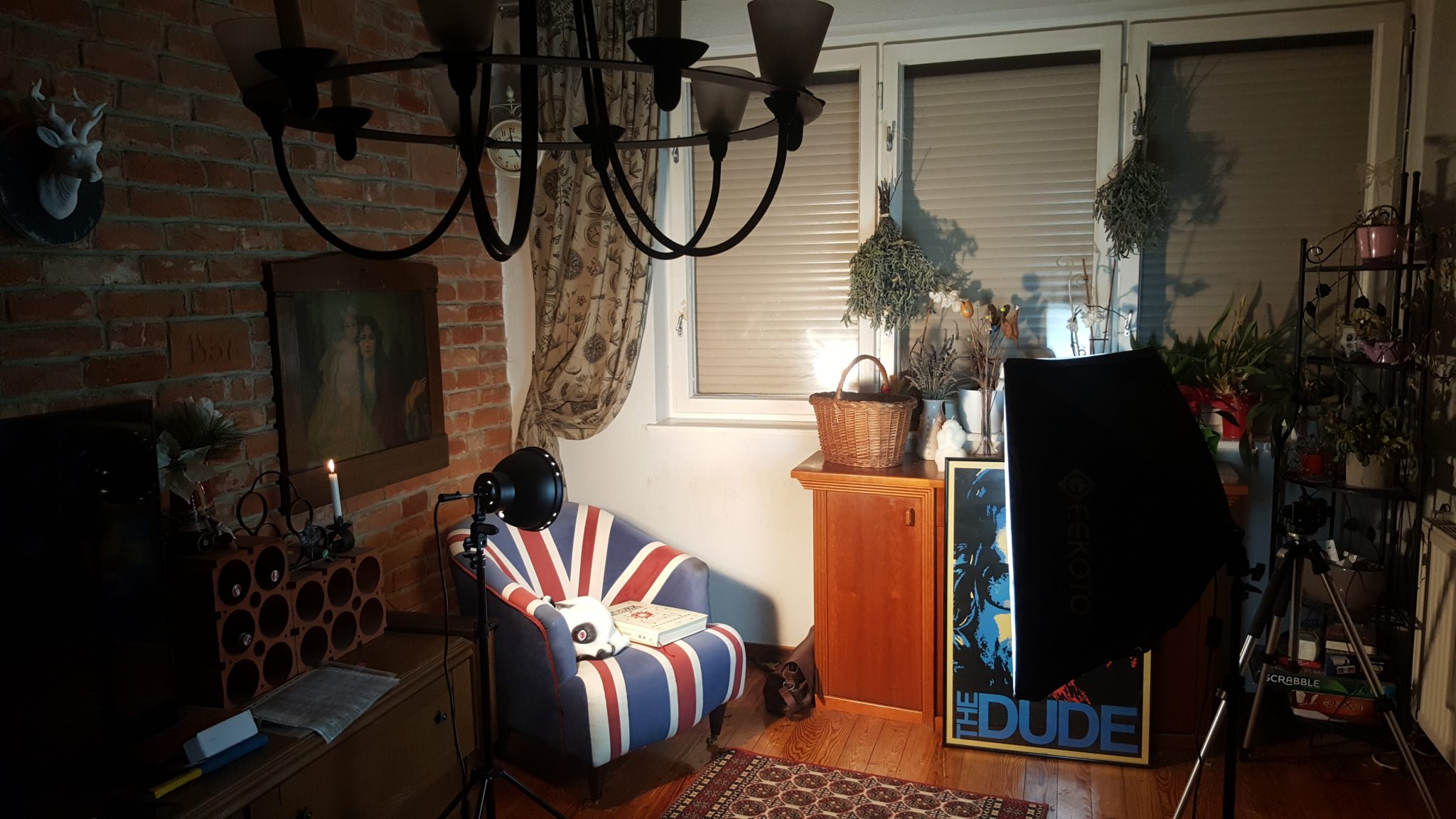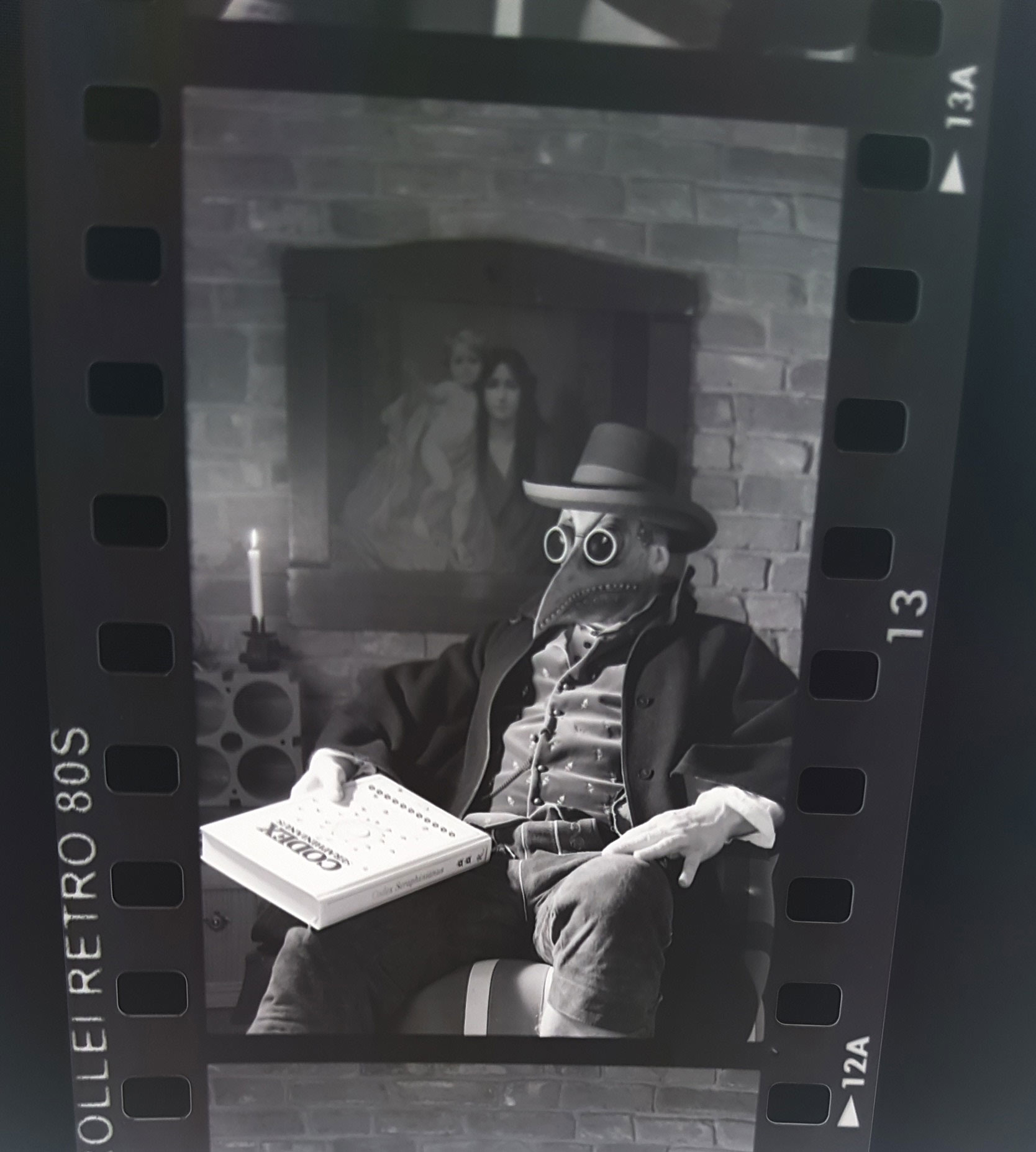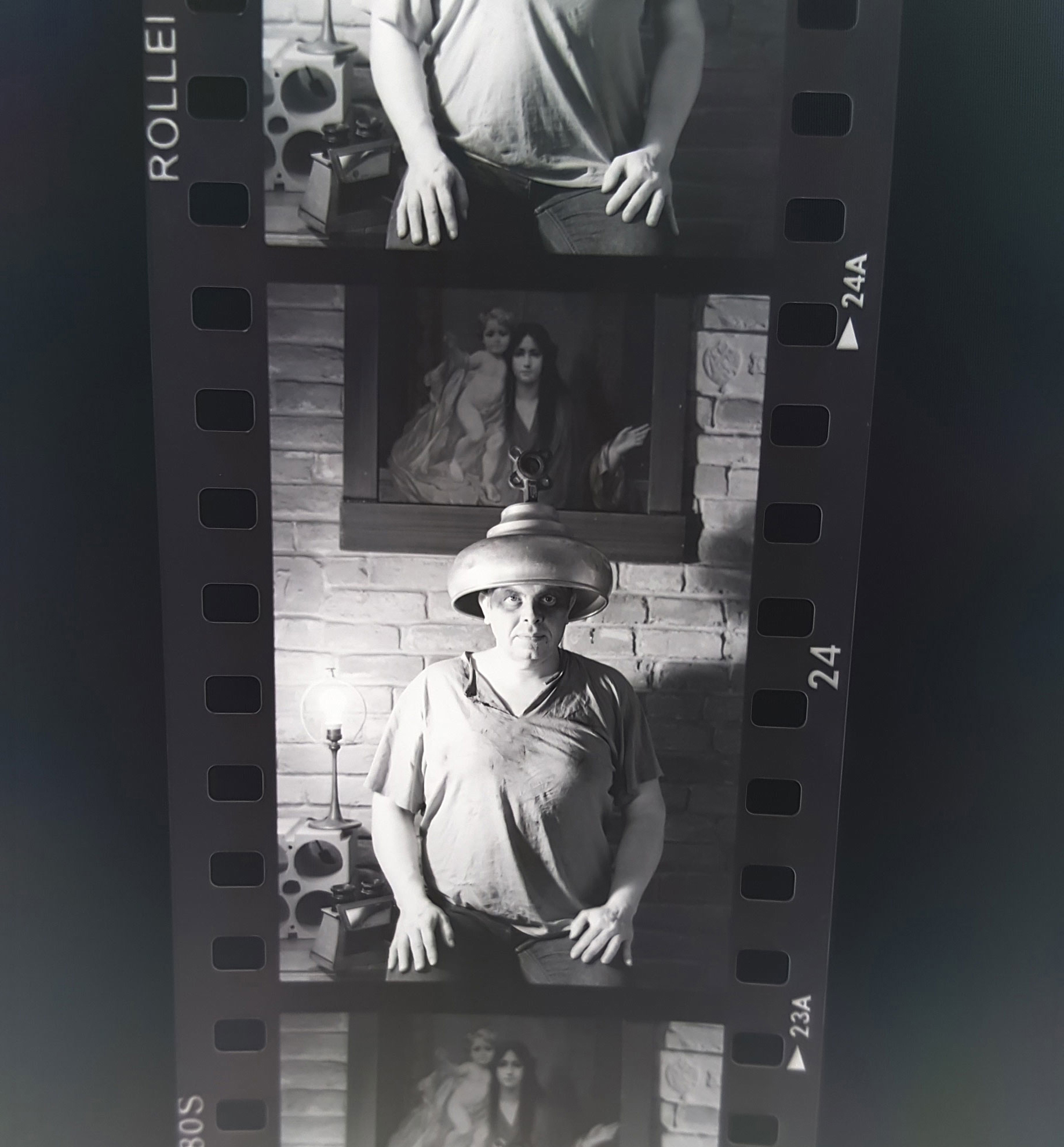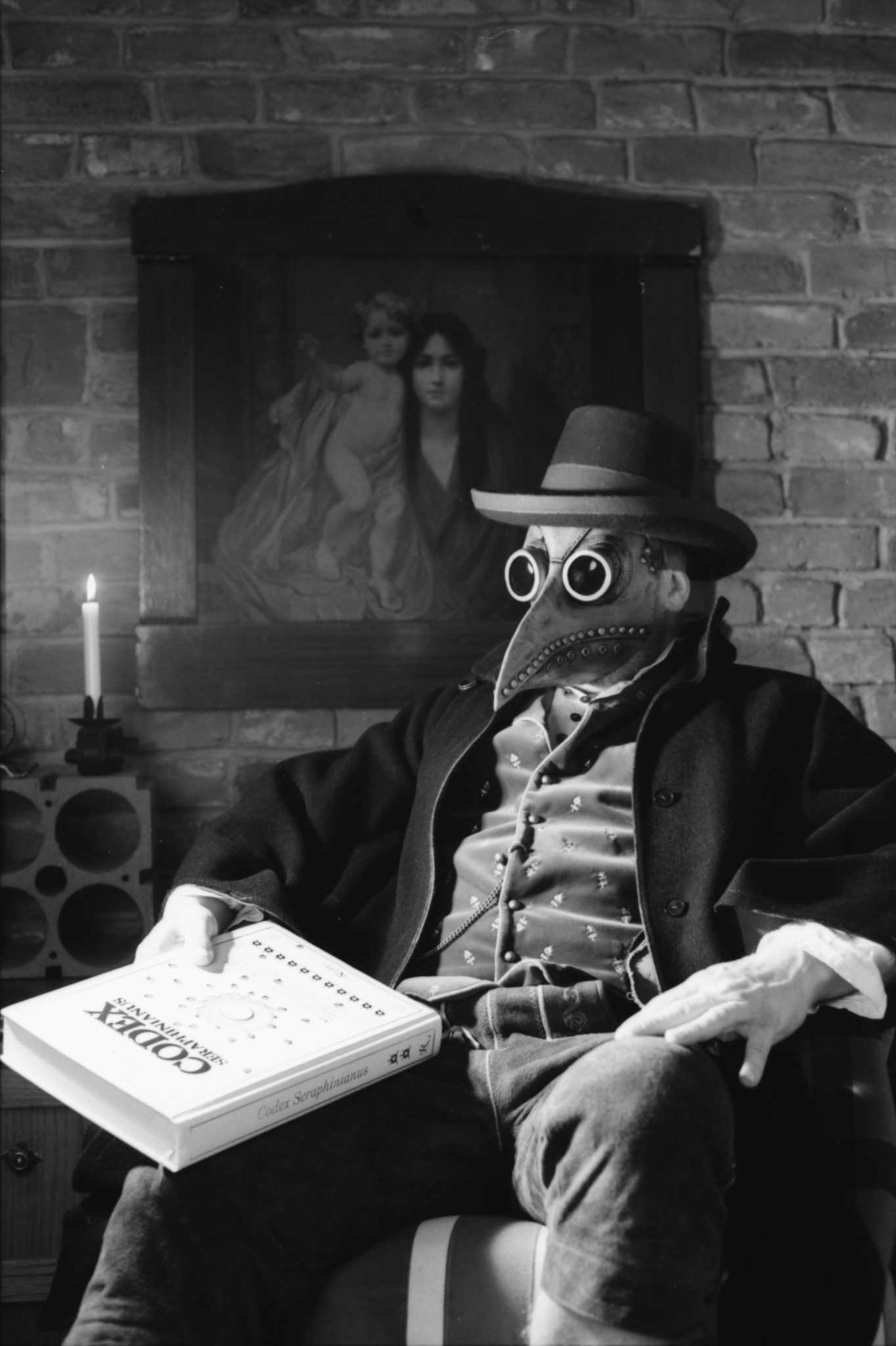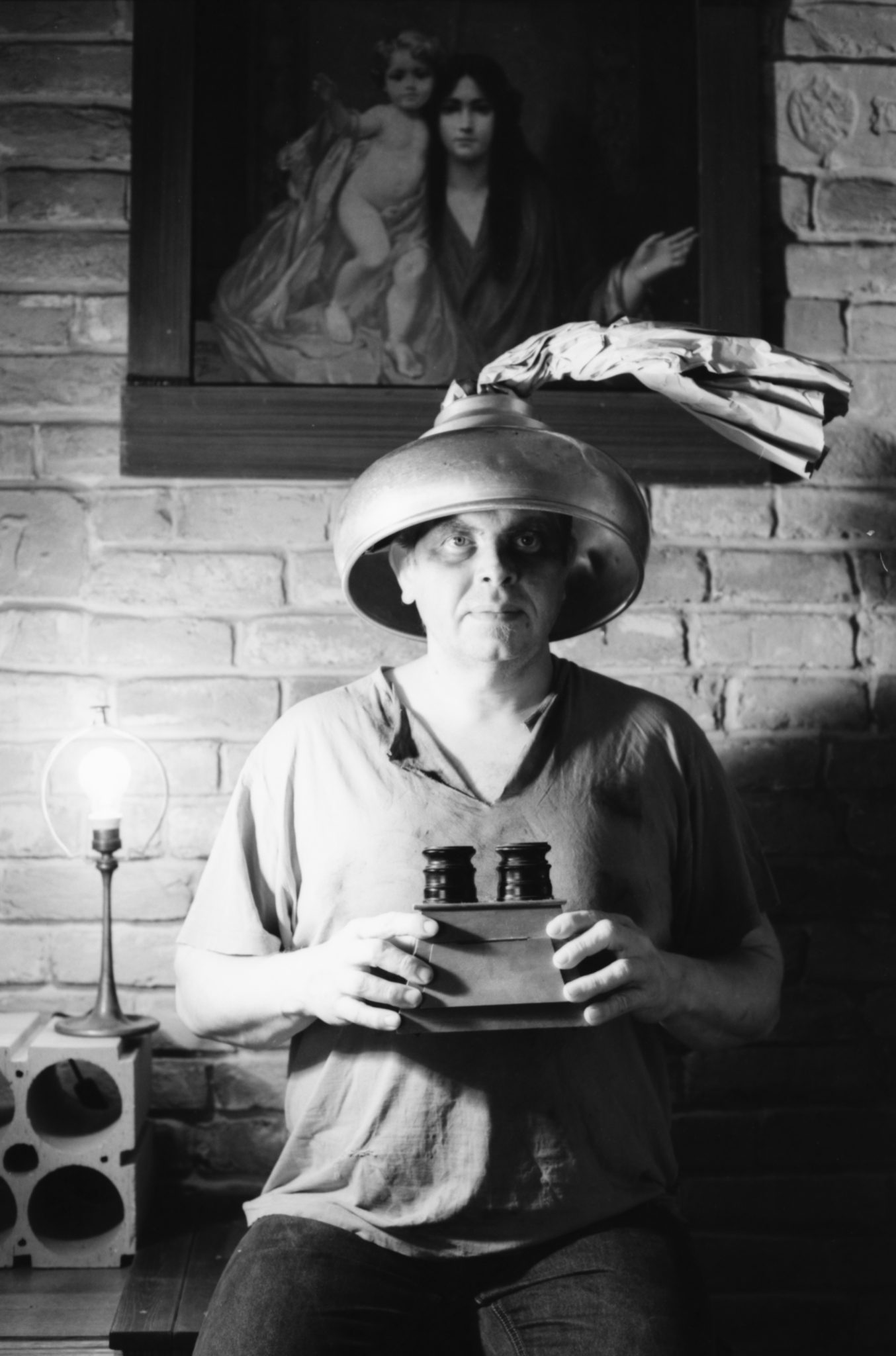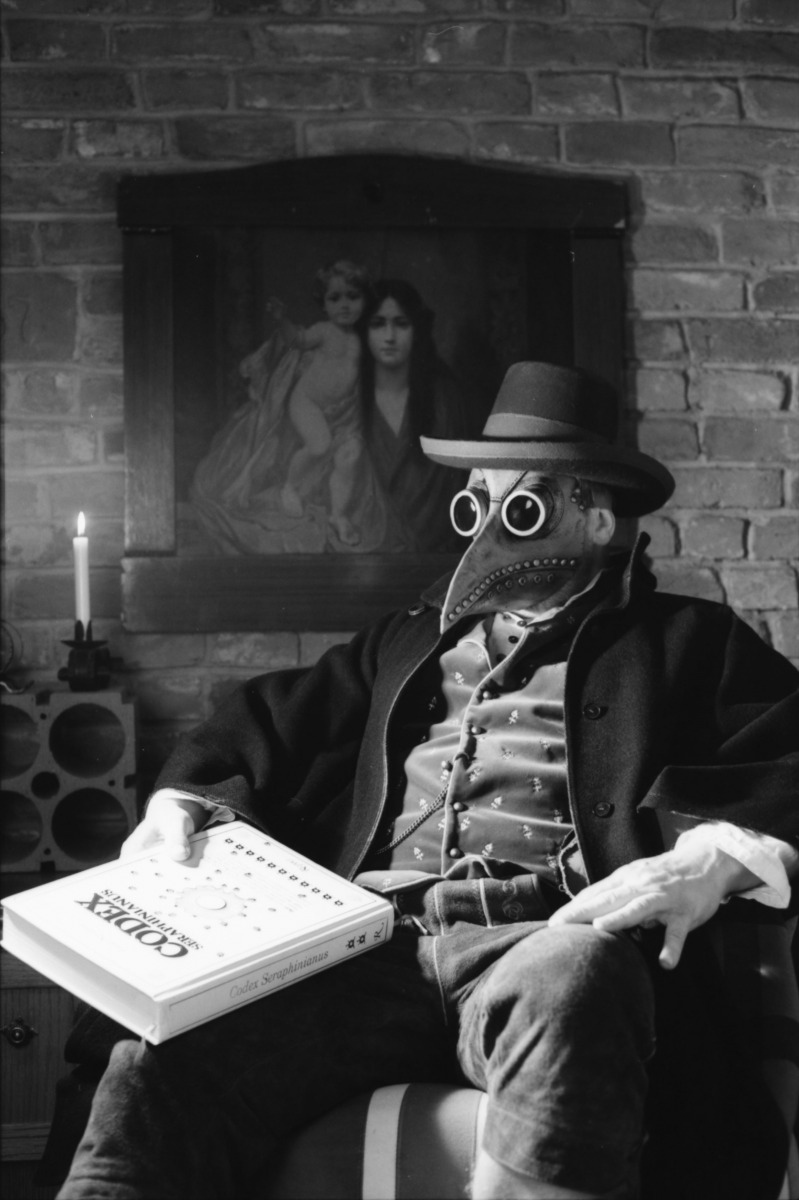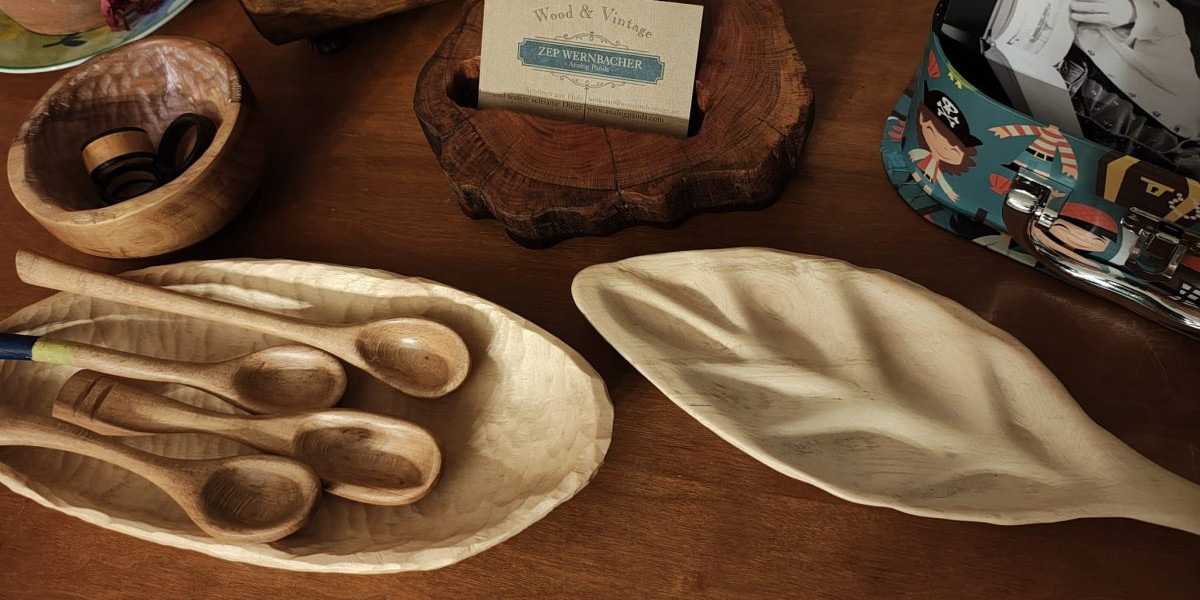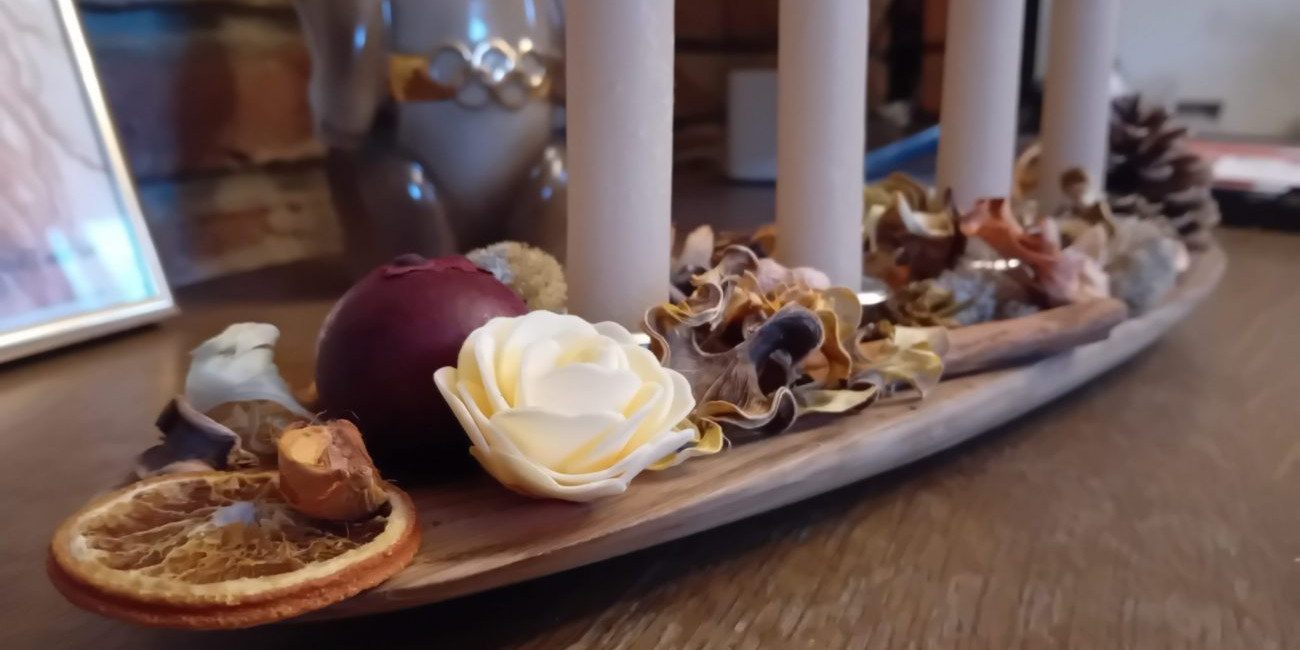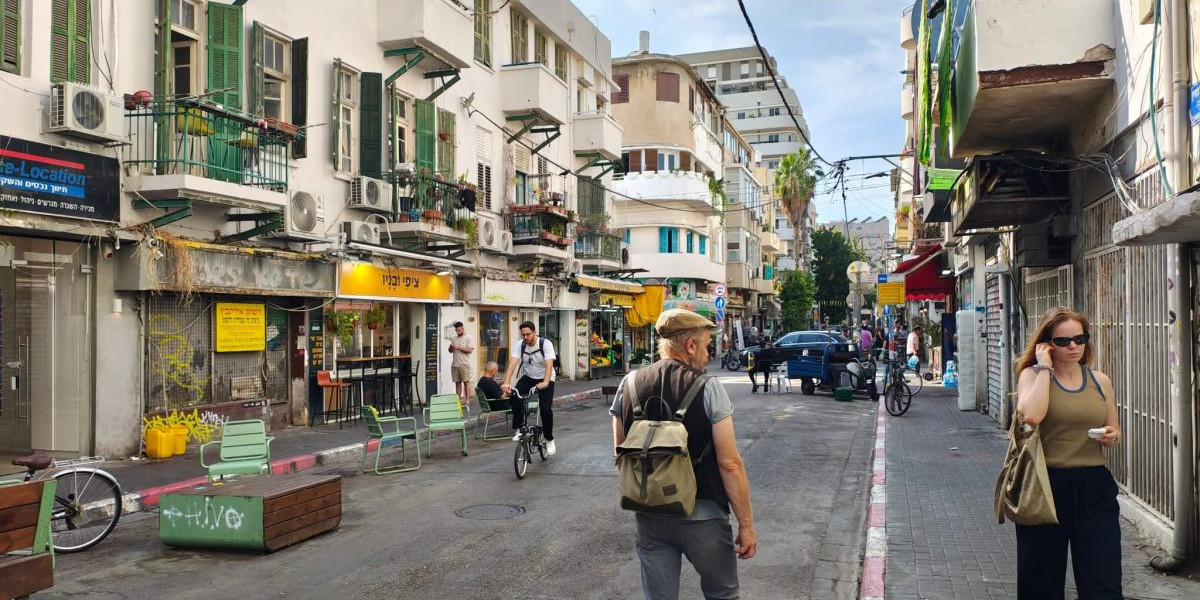As Rollei became some sort of my exclusive film brand for black & white photography I decided to give the Rollei Retro 80s a try. Overhelmingly happy with the Rollei Infrared 400, I am looking for some fine grain slower speed film, still capable to offer an extended redscale range for some infrared filters. Having this on mind, the specifications of the Retro 80s sound promising. The film is based on the Agfa Aviphot Pan 80, produced by Agfa in Mortsel, Belgium.
The Scenario: Portraitsin Studio Light
Light Setup & Camera Settings
For the first test I used my home studio (ok, it’s my living room). The light setup I used were one ADOLIGHT 21cm Spot (with ADOLIGHT Quartz-Halogen Bulb 250 W) as the main light source from the left side and one Softbox 50x70cm (with 85W 5500K Tri-Phosphor-Spiral CFL daylight balanced bulb) as a soft front light.
Camera & Settings: Nikon FE2, Nikkor 50mm 1:1,4. All shots f4 at 1/15. Film shot at box speed (ISO 80).
Developing the Film
The Negatives
The negatives look promising. Already with the backlight of a tablet the rich tonage is visible.
I read some comments on that film before, some of them reporting that it tends to heavy curling (despite the specification, that exactly this is avoided by a special coating). I really can’t support these comments, the film came out straight and after drying it kept being plain straight.
Compared to the Rollei Infrared 400 the negatives feel rather thin. Not as thin as the Silberra U200, which I tried some months ago, but remarkably thinner than the Infrared 400. Will be interesting what that means for scanning. (Spoiler: Nothing. It scans like a charm!)
The pictures below show mobile phone pics from the negatives and the digitally inverted version.
The Scans
I am very impressed by the scans. A very rich tonality, very good in the greys. The scans above are as they came out of the scanner, all correction tools at the scanner switched off.
The partly strong whites I messed up while shooting. Should have paying attention to the different light situation between the two setups, caused by the additional light bulb on the left side. But having a closer look, even there the needed info is available, so it’s possible to correct it a little bit in the darkroom or Photoshop.
My Resume
At the beginning I was a little bit sceptic, giving away my 400ISO film for a 80ISO one. My lighting equipment isn’t that capable as in a pro studio. Will it be ok with a slower speed film? Will I have to push it, loosing again the fine grain structure and tonality I was looking for?
None of that happened. I am absolutely pleased by that film. Sure, in my case 1/15 at f4 isn’t everything, but enough to get great portraits with my light setup. Maybe I will invest in some stronger bulbs for my two other softboxes which I didn’t use, or simply get another Adolight lamp. But for me it became clear that this Rollei Retro 80s is definitely a great film for portrait photography. Seems like I have a new unicorn in my stable.
The Full Photo Series:»The People of the Book: The Codex.«
The People of the Book: The Codex.
portfolio
"The People of The Book" is a dreamlike portrait series, walking the paths of a victorian marriage of David Lynch and Fritz Lang along the visions of the Codex Seraphinianus. Light Setup: 1x ADOLIGHT 21cm Spot (with ADOLIGHT Quartz-Halogen Bulb 250 W) as the main light source from the left side and 1x Softbox 50x70cm (with 85W 5500K Tri-Phosphor-Spiral CFL daylight balanced bulb) as a soft front…
Related Posts
Post
Vintage Tel Aviv – A Souvenir of it’s own
It’s about one and a half decades since I entered the door to the Antique Items Store in…

